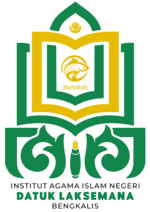K-13 تحسين تعلم اللغة العربية: تقييم كتاب "تعليم اللغة العربية" للصف العاشر في سياق
Optimalisasi Pembelajaran Bahasa Arab: Evaluasi Buku Ajar "Ta'limul Lugotil Arobiyyah" Kelas X Konteks K-13
DOI:
https://doi.org/10.56633/jkp.v20i2.1040Keywords:
Evalution, Analysis, Textbook, CurriculumAbstract
This research article evaluates the Arabic textbook "Ta'limul Lugotil Arobiyyah" for Class X in the context of the 2013 Curriculum. This research highlights the importance of Arabic as a global language, particularly in Islamic education, and emphasizes the need for effective teaching materials to improve student learning outcomes. The analysis focuses on the textbook's alignment with the curriculum standards, the appropriateness of its content and exercises, and the overall involvement of students in the learning process. The findings show that the textbooks meet several quality criteria and are relevant to student development, although improvements are still needed in areas such as visual presentation, image alignment with content, and consistency of competency indicators. The research method used is descriptive, aiming to describe phenomena with description and validation. This research is relevant, scientific, and specific to factual data. Data collection techniques through literature studies include searching, classification, processing, and interpretation of data, allowing effective information analysis to support research. The research aims to provide insights for future improvements in Arabic teaching materials, ensuring they effectively support educational goals and foster student motivation.
References
Ali Muhammad, al-Qasimi. Ittijahat Haditsah Fi Ta’lim al-Lughah al-’Arabiyah Li al-Nathiqin Bi al-Lughat al-Ukhra, Wa I’dad al-Mawad Li Ghair Nathiqin Bi al-’Arabiyyah, Wa al-Sajl al-’Ilmi Li Ta’lim al-Lughah al-’Arabiyyah Li al-Nathiqin Biha. Riyadh: ’Amadah al-Syu’un al-Maktabat Jami’ah al-Riyadh. n.d, n.d.
Bahri, Ratni Bt H., Suleman D. Kadir, Ibadurrahman Ali, and Muhammad Jundi. “Kesesuaian Materi Berdasarkan Teori Dan Praktek Pada Bahan Ajar Bahasa Arab.” Naskhi: Jurnal Kajian Pendidikan Dan Bahasa Arab 4, no. 2 (2022): 10–21. https://journal.uiad.ac.id/index.php/naskhi/article/view/1198.
Darmalaksana, Wahyudin. “Metode Penelitian Kualitatif Studi Pustaka Dan Studi Lapangan.” Pre-Print Digital Library UIN Sunan Gunung Djati Bandung, 2020. http://digilib.uinsgd.ac.id/id/eprint/32855.
DR. R. Hidayat. تعليم اللغة العربية Pelajaran Bahasa Arab Madrasah Aliyah Kelas X Berbasis Kurikulum 2013. 1st ed. Semarang: PT. Karya Toha Putra, 2014.
Fadilah, Rahma, Wiena Safitri, and Ahmad Asrof Fitri. “Analisis Buku Teks Bahasa Arab Kelas Vii Madrasah Tsanawiyah Kurikulum 2013 (Terbitan Kementerian Agama Republik Indonesia).” Journal of Islamic Studies 1, no. 3 (2023): 342–55. https://journals.iai-alzaytun.ac.id/index.php/jis/article/view/37.
Fasabbikh, Fasabbikh, and Najih Anwar. “Analisis Buku Teks Bahasa Arab Praktis Untuk SMP/MTs Kelas VII Karya Guru Bahasa Arab Foskam Sidoarjo Dalam Perspektif Badan Standar Kurikulum Dan Asesmen Pendidikan (BSKAP).” JIIP-Jurnal Ilmiah Ilmu Pendidikan 7, no. 4 (2024): 3702–10. http://www.jiip.stkipyapisdompu.ac.id/jiip/index.php/JIIP/article/view/4061.
Huda, Moh Nurul, Ahmad Faiz Nurrosyid, and Akhmad Bayu Aji. “Implementasi Metode Qira’ah Dalam Pembelajaran Bahasa Arab Di Madrasah Hidayatul Mubtadiin Lirboyo Kediri.” Al-Fakkaar 5, no. 1 (2024): 79–93. https://e-jurnal.unisda.ac.id/index.php/ALF/article/view/6041.
Jundi, Muhammad, and Najamudin Petta Solong. “Analisis Kesesuaian Indikator Dan Kompetensi Dasar Bahasa Arab KMA 183 | Tatsqifiy: Jurnal Pendidikan Bahasa Arab,” January 29, 2021. https://ojs.unida.ac.id/tatsqifiy/article/view/3642.
Kholison, M., Aidillah Suja, Cahya Edi Setyawan, and Ramandha Rudwi Hantoro. “PENGEMBANGAN BAHAN AJAR BAHASA ARAB DENGAN PENDEKATAN KEMAHIRAN BERBICARA.” Lahjah Arabiyah: Jurnal Bahasa Arab Dan Pendidikan Bahasa Arab 4, no. 1 (March 27, 2023): 90–102. https://doi.org/10.35316/lahjah.v4i1.90-102.
Kolintama, Chicin Marchella, and Muhammad Nur Iman. “Telaah Buku Ajar Bahasa Arab Madrasah Aliyah Kelas X Berdasarkan Keputusan Menteri Agama (KMA) Nomor 183 Tahun 2019.” Al-Muyassar: Journal of Arabic Education 1, no. 1 (2022): 52–60. http://jurnal.umt.ac.id/index.php/al/article/view/5994.
Lastri, Yunita. “Pengembangan Dan Pemanfaatan Bahan Ajar E-Modul Dalam Proses Pembelajaran.” Jurnal Citra Pendidikan 3, no. 3 (2023): 1139–46. https://jurnalilmiahcitrabakti.ac.id/jil/index.php/jcp/article/view/1914.
Mabrurrosi, Mabrurrosi. “Analisis Buku Ajar Bahasa Arab Karya Dr. D. Hidayat.” Al-Irfan: Journal of Arabic Literature and Islamic Studies 3, no. 2 (2020): 237–57. https://ejournal.kopertais4.or.id/madura/index.php/alirfani/article/view/4016.
M.M, Dr Muhammad Ramdhan, S. Pd. Metode Penelitian. Surabaya: Cipta Media Nusantara, 2021.
Mutaqi, Ibnul, and Novia Dwi Nurcahyaningtias. “Peran Bahan Ajar Dalam Pembelajaran Bahasa Arab.” Mahira: Journal of Arabic Studies 1, no. 1 (2021): 63–72. http://jurnal.iairm-ngabar.ac.id/index.php/mahira/article/view/121.
Panagara, Fathi Hisyam, Amzaludin Amzaludin, Abdul Hafizh Nur Fuadi, Maryam Nur Annisa, and Salman Al Farizi. “Tahlil Kitab Al-Lughah al-€ Arabiyyah Li al-Madrasah al-€ Aliyah € Ala Mandzur € Ali Muhammad al-Qasimi.” Arabiyatuna: Jurnal Bahasa Arab 7, no. 2 November (2023): 565–88. https://journal.iaincurup.ac.id/index.php/ARABIYATUNA/article/view/7129.
Shofiyani’, Amrini, and Rina Dian Rahmawati. “PENGEMBANGAN BAHAN AJAR BERBASIS MODEL KOMUNIKATIF UNTUK MENINGKATKAN KETERAMPILAN BERBICARA BAHASA ARAB.” JURNAL EDUCATION AND DEVELOPMENT 8, no. 4 (October 28, 2020): 238–238. https://journal.ipts.ac.id/index.php/ED/article/view/2147.
Wachdah, Riham Lailatul. “Evaluasi Buku Ajar Bahasa Arab Kelas X Madrasah Aliyah: Pendekatan Saintifik Kurikulum 2013.” Al-Ma’rifah 17, no. 1 (2020): 41–47. https://core.ac.uk/download/pdf/326767919.pdf.
Wiya, Siti Aliyya Laubaha, Ratni Bt H. Bahri, Suleman D. Kadir, muhammad Zikran Adam, Ibadurrahman Ali, and Muhammad Jundi. “Kesesuaian Materi Berdasarkan Teori Dan Praktek Pada Bahan Ajar Bahasa Arab.” Naskhi: Jurnal Kajian Pendidikan Dan Bahasa Arab 4, no. 2 (October 24, 2022): 10–21. https://doi.org/10.47435/naskhi.v4i2.1198.
Downloads
Published
Issue
Section
License
Copyright (c) 2025 Namiyah Fitriani, Muhaiban

This work is licensed under a Creative Commons Attribution-NonCommercial-ShareAlike 4.0 International License.
Authors who publish with this journal agree to the following terms:
- Authors retain copyright and grant the journal right of first publication with the work simultaneously licensed under a Creative Commons Attribution-ShareAlike 4.0 International License. that allows others to share the work with an acknowledgement of the work's authorship and initial publication in this journal.
- Authors are able to enter into separate, additional contractual arrangements for the non-exclusive distribution of the journal's published version of the work (e.g., post it to an institutional repository or publish it in a book), with an acknowledgement of its initial publication in this journal.
- Authors are permitted and encouraged to post their work online (e.g., in institutional repositories or on their website) prior to and during the submission process, as it can lead to productive exchanges, as well as earlier and greater citation of published work (See The Effect of Open Access).






